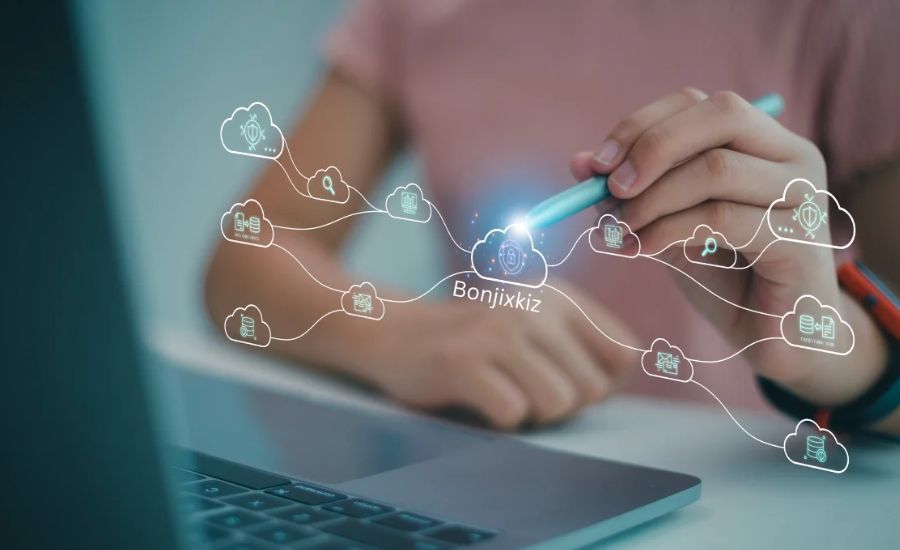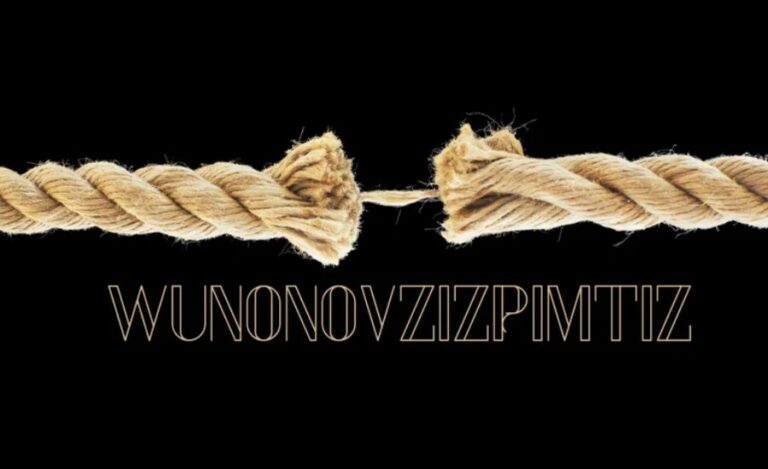qwioxiz2057 Introduction, The Role, The Benefits & More
Introduction to Zero Trust Architecture
Zero Trust Architecture (ZTA) is a modern cybersecurity framework designed to remove implicit believe within a network. Unlike conventional safety models that expect users and gadgets inside a network are safe, ZTA enforces strict verification for each get entry to request. This approach follows the “by no means consider, always confirm” principle, making sure that authentication, authorization, and continuous monitoring are in region before granting get entry to to any aid.
By eliminating automatic consider, companies can higher guard touchy information, save you unauthorized get entry to, and strengthen their universal protection posture. ZTA is specially powerful in mitigating risks associated with insider threats, compromised credentials, and superior cyberattacks.
The Role of Zero Trust Network Access (ZTNA)

A middle thing of the Zero Trust framework is Zero Trust Network Access (ZTNA). This safety model guarantees that users are granted get right of entry to strictly on a want-to-recognize foundation. Unlike conventional security architectures that provide vast get admission to once a person enters the network, ZTNA limits access to simplest the essential applications, systems, or facts. This reduces attack surfaces and minimizes the risk of statistics breaches or lateral movement inside the network.
ZTNA operates by using continuously authenticating customers and gadgets, verifying their identification, context, and safety posture before allowing get right of entry to. It additionally works seamlessly with cloud-based totally environments and far off work fashions, making it an crucial element for cutting-edge corporations transitioning faraway from old perimeter-primarily based defenses inclusive of VPNs and firewalls.
The Benefits of Zero Trust
Implementing a Zero Trust safety model gives a ways greater than just greater protection in opposition to cyber threats. By requiring non-stop identification verification for users, devices, and programs, groups can notably reduce the risk of unauthorized get entry to and records breaches. This strict authentication system eliminates security gaps that hackers often make the most, ensuring a more resilient cybersecurity posture.
Beyond security, Zero Trust additionally enhances operational efficiency. With secure but streamlined access controls, employees can effortlessly and adequately connect with the equipment and applications they need without unnecessary delays. Unlike traditional safety models that often introduce friction via excessive authentication steps, Zero Trust optimizes access workflows, lowering downtime and improving productiveness.
By aligning safety with seamless consumer experience, Zero Trust fosters an surroundings wherein performance and protection cross hand in hand. Organizations not should pick between protection and usability—this version ensures both are prioritized without compromise.
Would you want me to refine this similarly or upload unique industry examples?
Components of a Zero Trust Model
Zero Trust Architecture (ZTA) is a modern cybersecurity framework designed to do away with implicit agree with in customers, devices, and network components. Instead of assuming that some thing inside an enterprise’s perimeter is secure, ZTA enforces non-stop verification via strict authentication and authorization mechanisms.
A fundamental component of ZTA is real-time identification validation, which is based on superior security features inclusive of multifactor authentication (MFA), biometric verification, smart cards, and one-time passcodes (OTPs). Additionally, corporations enforce sturdy identity control protocols to make certain that only proven users and devices benefit get admission to to touchy resources.
One of the middle standards of Zero Trust is the least privilege get entry to version, which limits consumer and device permissions strictly to what’s essential for his or her precise roles. This reduces the hazard of unauthorized access and capacity statistics breaches, preventing cybercriminals from exploiting excessive or unnecessary get entry to rights.
The Role of Micro-Segmentation in Zero Trust Security
Another essential detail of Zero Trust Architecture is micro-segmentation—a safety strategy that divides a community into smaller, remoted zones, every with its personal get entry to controls and security features. By imposing granular firewall rules and strict get admission to controls, groups can contain protection breaches within a unmarried phase, preventing lateral movement by using attackers.
Micro-segmentation guarantees that despite the fact that a cyber chance infiltrates one part of the network, it can not unfold to other critical systems or sensitive statistics. This reduces the overall assault surface, making it notably more difficult for cybercriminals to navigate thru an agency’s infrastructure.
By integrating Zero Trust principles with advanced authentication techniques and micro-segmentation, agencies can build a greater resilient cybersecurity posture, shielding treasured records and ensuring a secure, efficient digital environment.
Trends in Zero Trust Technology
The evolution of Zero Trust safety is deeply connected to advancements in artificial intelligence (AI) and system learning (ML), that are reshaping how organizations detect, save you, and reply to cyber threats. These technology enhance Zero Trust by automating chance detection, studying behavioral patterns, and imparting real-time protection insights to mitigate risks before they improve.
AI-Driven Threat Detection and Automated Security Response
By leveraging AI-powered protection analytics, companies can find out anomalies and potential safety threats with greater pace and accuracy. Traditional safety models regularly depend upon predefined regulations, but AI constantly learns from records patterns, allowing it to hit upon formerly unknown threats and reply proactively.
Machine mastering algorithms play a crucial function in adapting Zero Trust guidelines based on evolving cyber threats. For example, ML-driven safety models can:
- Analyze user behavior to locate suspicious hobby.
- Identify unauthorized get admission to attempts in real time.
- Automate incident response by setting apart compromised devices or bills.
Building a Future-Ready Zero Trust Strategy
With the growing complexity of cyberattacks, AI and ML integration is becoming critical for present day Zero Trust frameworks. Organizations that adopt those technology can give a boost to their safety posture, lessen reaction times, and decorate their standard resilience in opposition to emerging threats.
As cyber threats hold to evolve, the synergy between Zero Trust and AI-driven safety features will outline the future of cybersecurity. Businesses that proactively put in force clever automation inside their Zero Trust techniques could be higher equipped to guard touchy data, hold compliance, and protect digital assets towards superior cyber risks.
Would you like me to feature actual-world case research or examples of AI-driven Zero Trust implementations?
Real-World Success Stories
Organizations throughout various industries have correctly followed Zero Trust protection models, extensively improving their cyber resilience whilst minimizing the risk of unauthorized get right of entry to. These implementations have strengthened danger prevention techniques, more desirable real-time safety tracking, and optimized operational efficiency through lowering security breaches.
Key Insights from Zero Trust Success Stories
The reviews of groups which have transitioned to Zero Trust screen several critical elements for a a success deployment:
- Strategic Planning Early Adoption – Businesses that proactively plan their Zero Trust implementation revel in a smoother transition and fewer safety gaps. A phased method, together with pilot applications and hazard tests, ensures effective execution.
- Tailored Security Strategies – Customizing Zero Trust regulations to align with business operations, consumer roles qwioxiz2057, and infrastructure ends in higher protection enforcement with out compromising productiveness.
- Investment inside the Right Technologies – Organizations that invest in multi-factor authentication (MFA), identity and get admission to management (IAM), and micro-segmentation see advanced community safety and stronger access controls.
- Continuous Monitoring Adaptation – Implementing AI-driven security analytics and automatic threat detection permits agencies to become aware of vulnerabilities and reply swiftly to emerging risks.
The Business Benefits of Zero Trust Adoption
By successfully enforcing Zero Trust, groups obtain more security flexibility, shield vital belongings, and enhance compliance with regulatory frameworks. The proactive defense technique facilitates corporations stay in advance of cyber threats, ensuring long-term data safety and resilience in an ever-evolving threat landscape.
Considerations and Challenges
While Zero Trust Architecture (ZTA) offers strong protection benefits, corporations frequently face demanding situations when integrating it into current IT infrastructures. A carefully deliberate approach is critical to balance robust security features with usability and operational performance.
1. Balancing Security with User Experience
One of the most important issues approximately Zero Trust is that strict authentication and verification methods can also create friction for customers, slowing down productivity. However, superior protection technology, inclusive of AI-pushed authentication, adaptive get admission to controls, and seamless multi-component authentication (MFA), can help mitigate those disruptions. By leveraging automated verification and sensible get admission to control, companies can preserve excessive protection with out hindering workflow performance.
2. Cost and Feasibility of Implementation
Transitioning to Zero Trust calls for monetary investment and useful resource reallocation. Businesses want to evaluate the feasibility of qwioxiz2057 upgrading their security infrastructure whilst making sure that legacy structures can be incorporated with Zero Trust standards. To manipulate charges, businesses can undertake a phased approach, prioritizing crucial assets and high-risk regions earlier than rolling out full-scale Zero Trust deployment.
3. Overcoming Resistance to Change
Shifting to a Zero Trust version isn’t only a generation improve—it calls for a cultural shift within an company. Employees and IT teams might also resist new security protocols due to concerns about complexity or workflow disruptions. Training packages, clear communication, and management guide are vital to fostering adoption and compliance throughout all departments.
The Long-Term Value of Zero Trust
Despite those challenges, the long-time period advantages of Zero Trust far outweigh the initial hurdles. Organizations that efficiently integrate Zero Trust revel in more potent cybersecurity resilience, reduced breach dangers, and stepped forward regulatory compliance. By leveraging the proper technology, strategic planning, and continuous monitoring, companies can construct a future-evidence security model that adapts to evolving cyber threats.
Getting Started with Zero Trust
Implementing Zero Trust Architecture (ZTA) calls for a nicely-established method that prioritizes security, operational performance, and flexibility. Organizations have to examine their present security posture, pinpoint vulnerabilities, and behavior comprehensive chance opinions to ensure a easy and effective transition.
1. Conduct a Security Assessment
The first step in a Zero Trust adventure is to carry out an in depth audit of cutting-edge security frameworks. Organizations need to identify capability vulnerabilities, determine get right of entry to controls, and evaluate gaps in authentication and authorization tactics. By understanding vulnerable points inside the gadget, businesses can qwioxiz2057 expand a chance-based method to Zero Trust implementation.
2. Develop a Clear Roadmap
A established implementation plan is crucial for a hit Zero Trust adoption. This plan should consist of:
- Defined milestones and timelines for gradual implementation
- Allocation of necessary assets (finances, employees, and era)
- Security priorities primarily based on critical assets and high-hazard areas
A phased method allows corporations to combine Zero Trust regulations systematically, minimizing operational disruptions whilst maximizing safety effectiveness.
3. Align Stakeholders and Foster Collaboration
The fulfillment of Zero Trust implementation depends on robust collaboration among key stakeholders, consisting of IT, cybersecurity teams, compliance officers, and govt leadership. Each department performs a important role in ensuring that security features align with commercial enterprise objectives whilst keeping usability qwioxiz2057 and efficiency.
Key movements for stakeholder engagement encompass:
- Encouraging open communication between IT, security, and commercial enterprise units
- Aligning compliance necessities with Zero Trust regulations
- Establishing ongoing schooling applications to make certain corporation-extensive adoption
- four. Integrate Security into Daily Operations
Zero Trust have to end up a essential part of an agency’s day by day operations, in place of an remoted safety initiative. This requires computerized hazard detection, real-time tracking, and adaptive get entry to controls that constantly confirm consumer identities, gadgets, and community pastime.
By adopting a proactive security mind-set, companies can safeguard sensitive records, prevent unauthorized get right of entry to, and ensure resilience towards evolving cyber threats.
Examples of Advancements by Qwioxiz2057
Qwioxiz2057 sticks out amongst its competitors because of its groundbreaking improvements which might be remodeling entire industries. Its AI-pushed analytics platform is a recreation-changer, empowering corporations to qwioxiz2057 decorate decision-making tactics and optimize operations effectively.
One of its most remarkable contributions is the integration of clever automation technologies. These solutions help companies streamline workflows, reduce human errors, and appreciably improve ordinary productiveness. Processes that had been as soon as inefficient have now become surprisingly optimized, enabling companies to operate with extra accuracy and speed.
Beyond automation, Qwioxiz2057 is dedicated to sustainability thru its superior power control software program. This contemporary generation permits groups to undertake eco-friendly practices resultseasily, leading to a discounted carbon footprint and extra sustainable operations.
Additionally, the enterprise has launched an innovative collaboration suite designed to help faraway groups running across one-of-a-kind locations. With a host of superior features, this platform enhances conversation and fosters seamless teamwork, which is vital in today’s speedy-paced and interconnected virtual landscape.
As era continues to evolve, Qwioxiz2057 remains at the vanguard of innovation, continuously introducing transformative solutions that reshape the IT enterprise.
Facts:
- Zero Trust is a Cybersecurity Framework
- It eliminates implicit trust within a network and enforces strict identity verification for every access request.
- “Never Trust, Always Verify” Principle
- Unlike traditional security models qwioxiz2057, ZTA assumes no user, device, or system is inherently safe, requiring continuous authentication and authorization.
- Zero Trust Network Access (ZTNA) is a Core Component
- ZTNA restricts access on a need-to-know basis, reducing attack surfaces and preventing lateral movement in the network.
- Key Security Components in ZTA
- Multi-Factor Authentication (MFA): Strengthens identity verification.
- Least Privilege Access: Users/devices get only the permissions they need.
- Micro-Segmentation: Divides the network into secure zones to limit breaches.
- Continuous Monitoring: Tracks user behavior and detects anomalies.
- AI and Machine Learning Enhance Zero Trust
- AI-powered threat detection and automated security responses help organizations proactively manage cyber risks.
- Benefits of Zero Trust Security
- Reduces security breaches by eliminating trust-based vulnerabilities.
- Improves operational efficiency with streamlined access controls.
- Enhances compliance with regulatory standards.
- Challenges in Implementing Zero Trust
- Balancing security with user experience.
- Cost and feasibility of upgrading existing infrastructure.
- Resistance to change from employees qwioxiz2057 and IT teams.
- Adoption Trends
- Organizations across industries are shifting towards Zero Trust due to increasing cyber threats, remote work expansion, and cloud computing reliance.
Summary:
Zero Trust Architecture (ZTA) is a cybersecurity model that eliminates implicit trust in networks, enforcing strict verification before granting access to resources. Unlike traditional security frameworks that assume users and devices inside a network are safe, Zero Trust requires authentication and authorization for every access request.
A critical component of Zero Trust is Zero Trust Network Access (ZTNA), which ensures users can only access necessary applications, reducing security qwioxiz2057 risks. Key security measures within ZTA include multi-factor authentication (MFA), least privilege access, micro-segmentation, and continuous monitoring.
AI and machine learning further enhance Zero Trust security by automating threat detection and response, helping organizations proactively defend against cyber threats. While Zero Trust improves cybersecurity and operational efficiency, its implementation can be challenging due to costs, integration issues, and resistance to change.
Despite these challenges, Zero Trust adoption is increasing as businesses recognize its role in preventing breaches, securing remote work environments, and meeting compliance requirements.
FAQs:
1. What is Zero Trust Architecture (ZTA)?
Zero Trust Architecture is a cybersecurity framework that qwioxiz2057 removes implicit trust within a network and requires continuous authentication and authorization for every user and device.
2. How is Zero Trust different from traditional security models?
Traditional security models assume that everything inside a network is safe, while Zero Trust assumes no entity is inherently secure and enforces strict verification.
3. What are the main components of Zero Trust?
- Multi-Factor Authentication (MFA)
- Least Privilege Access
- Micro-Segmentation
- Continuous Monitoring
- AI-Driven Threat Detection
4. What is Zero Trust Network Access (ZTNA)?
ZTNA is a security model that limits user access to only the necessary applications and data, reducing attack surfaces and preventing unauthorized lateral movement within networks.
5. How does Zero Trust improve cybersecurity?
Zero Trust reduces the risk of unauthorized access and data breaches by enforcing strict authentication, limiting privileges, and continuously qwioxiz2057 monitoring user activities.
6. What are the benefits of Zero Trust?
- Stronger security against cyber threats
- Improved access control and compliance
- Enhanced operational efficiency and productivity
7. What are the challenges in implementing Zero Trust?
- Balancing security with a smooth user experience
- Cost of upgrading existing infrastructure
- Resistance to change from employees and IT teams
8. Can Zero Trust be used in cloud environments?
Yes, Zero Trust is highly compatible with cloud-based infrastructures and remote work models, making it essential for modern businesses.
9. How does AI enhance Zero Trust security?
AI-driven threat detection and automated security responses help organizations detect anomalies, prevent attacks, and respond quickly to security incidents.
10. What industries benefit the most from Zero Trust?
Zero Trust is beneficial for all industries, especially qwioxiz2057 those handling sensitive data, including finance, healthcare, government, and technology sectors.
Read More information About Blog At royalbucks.net






